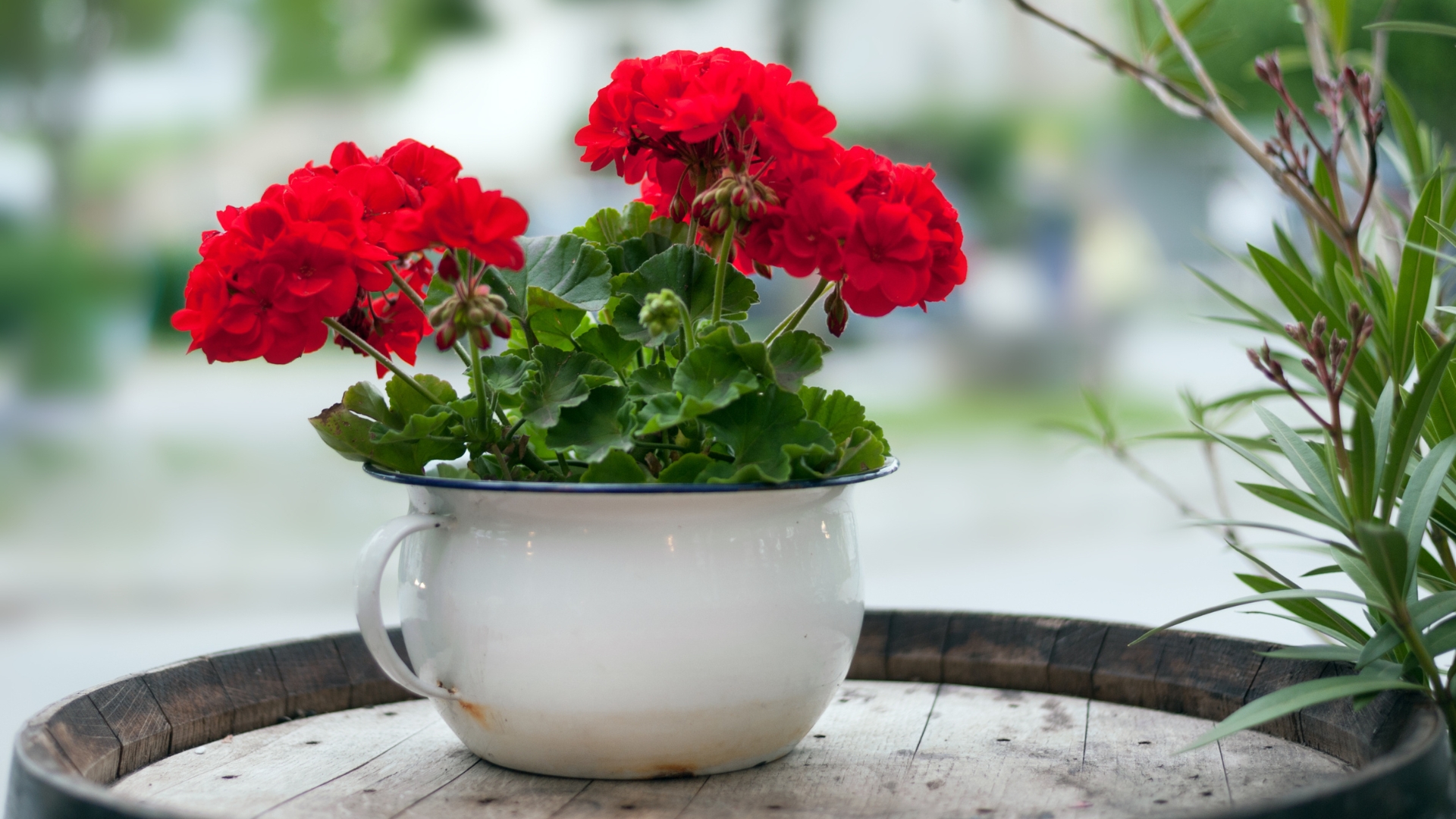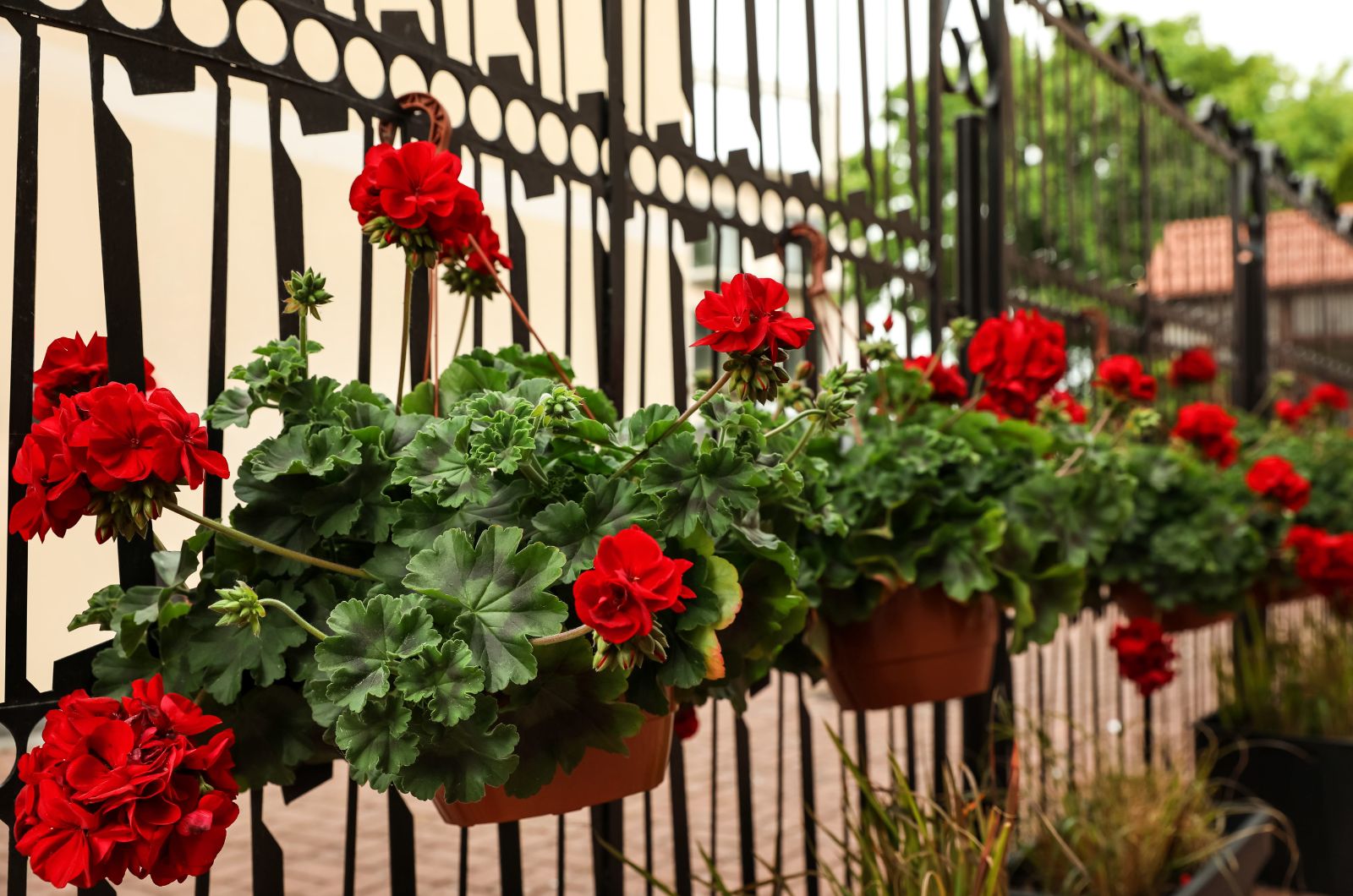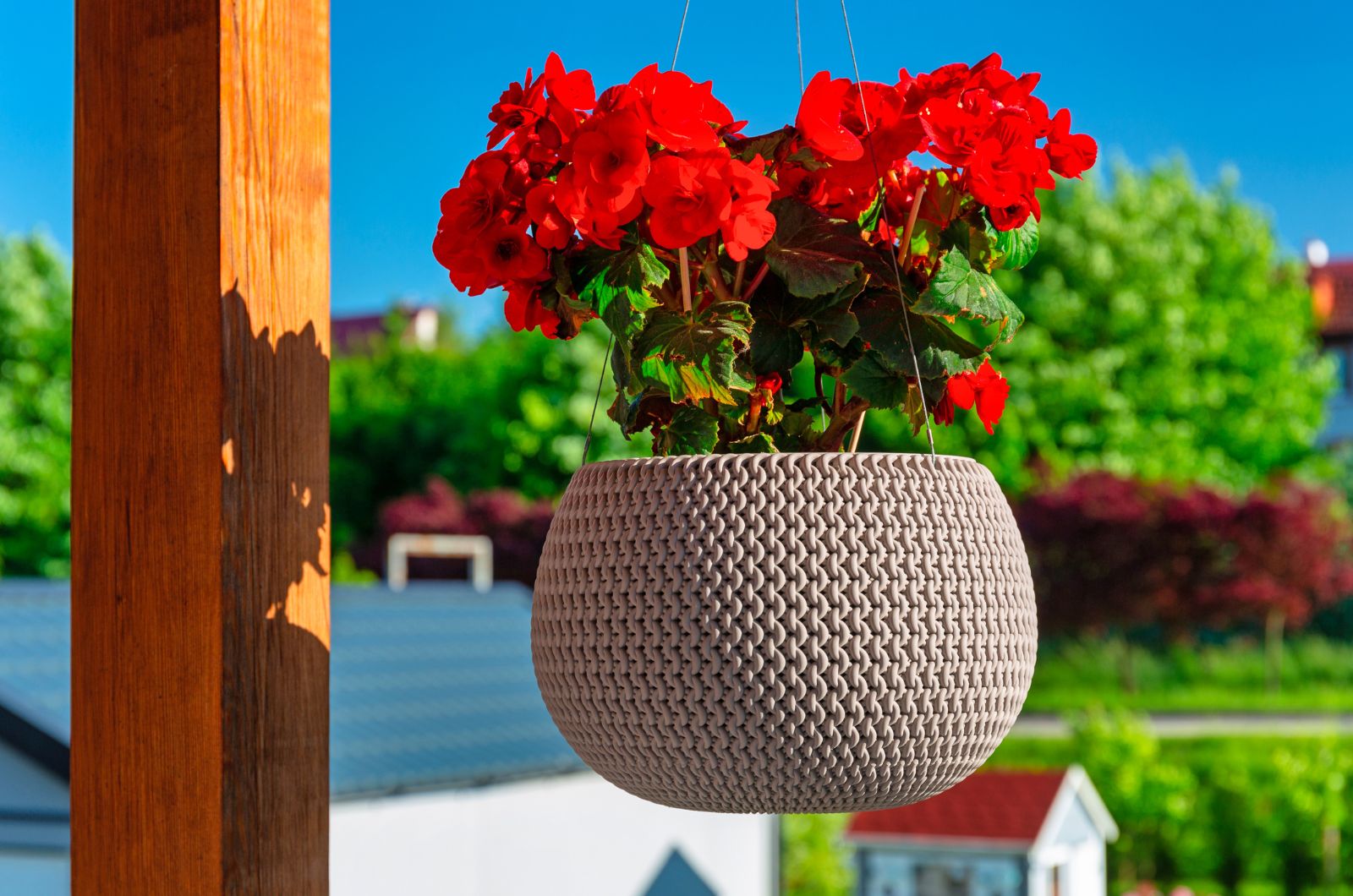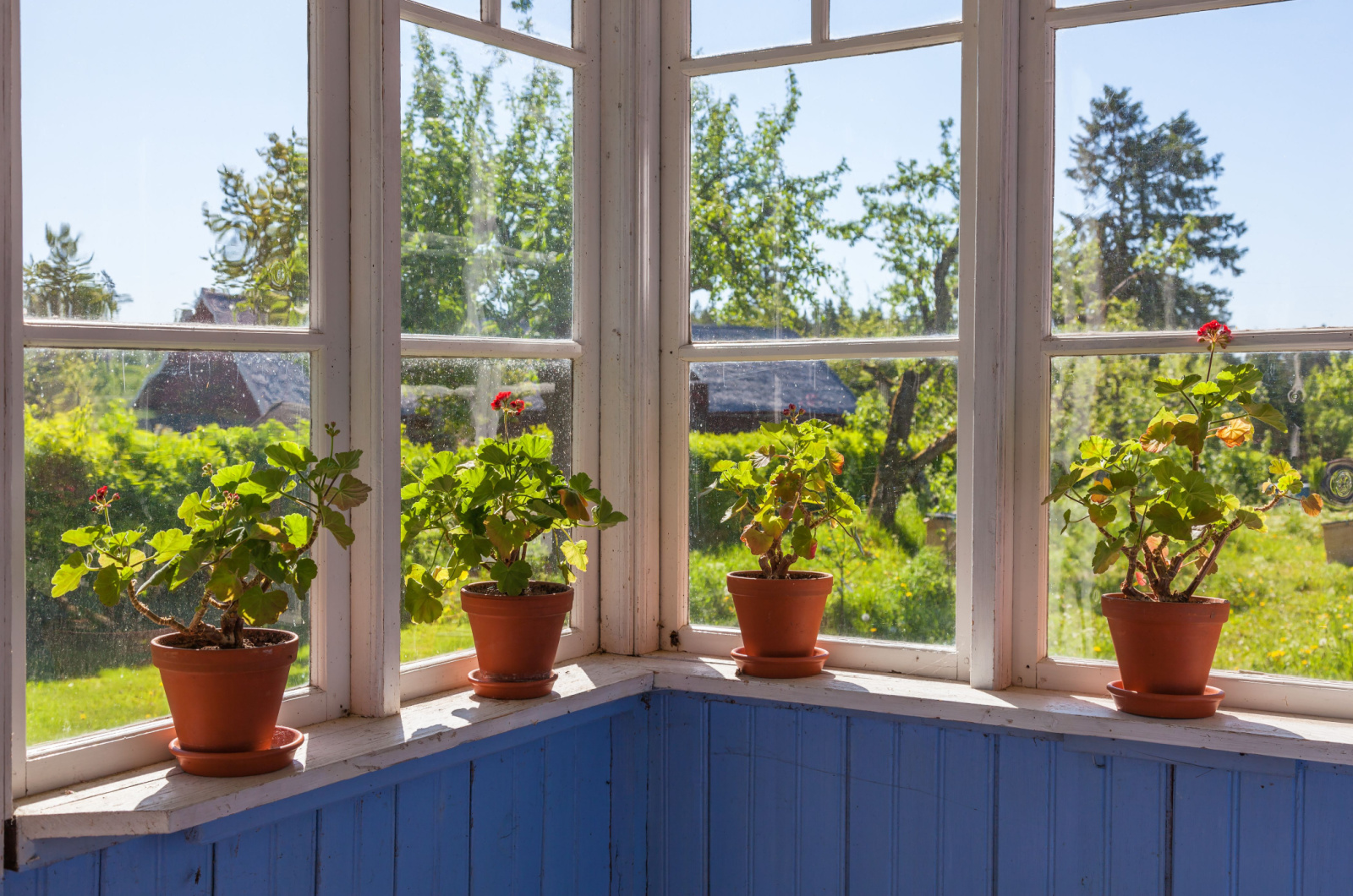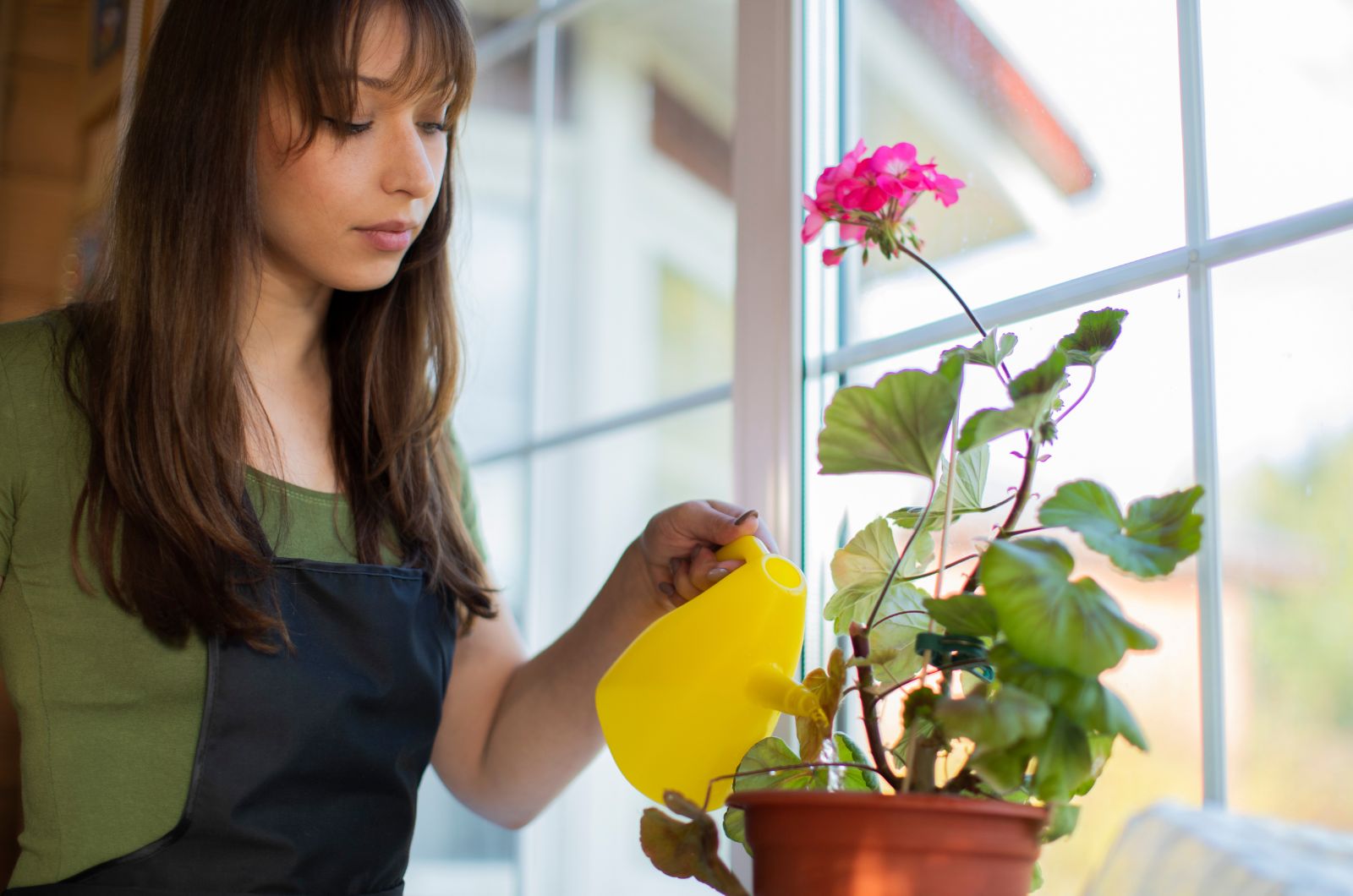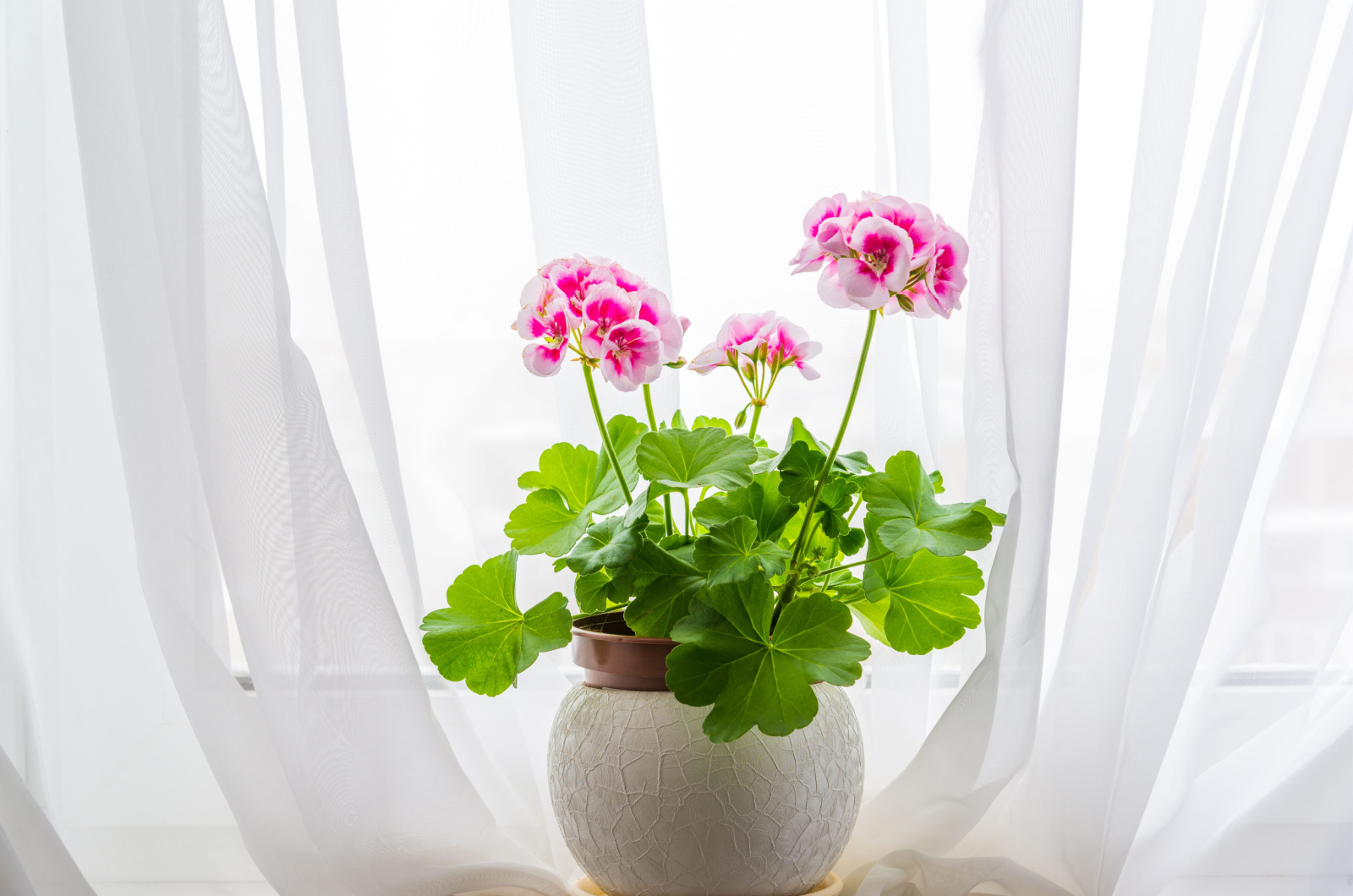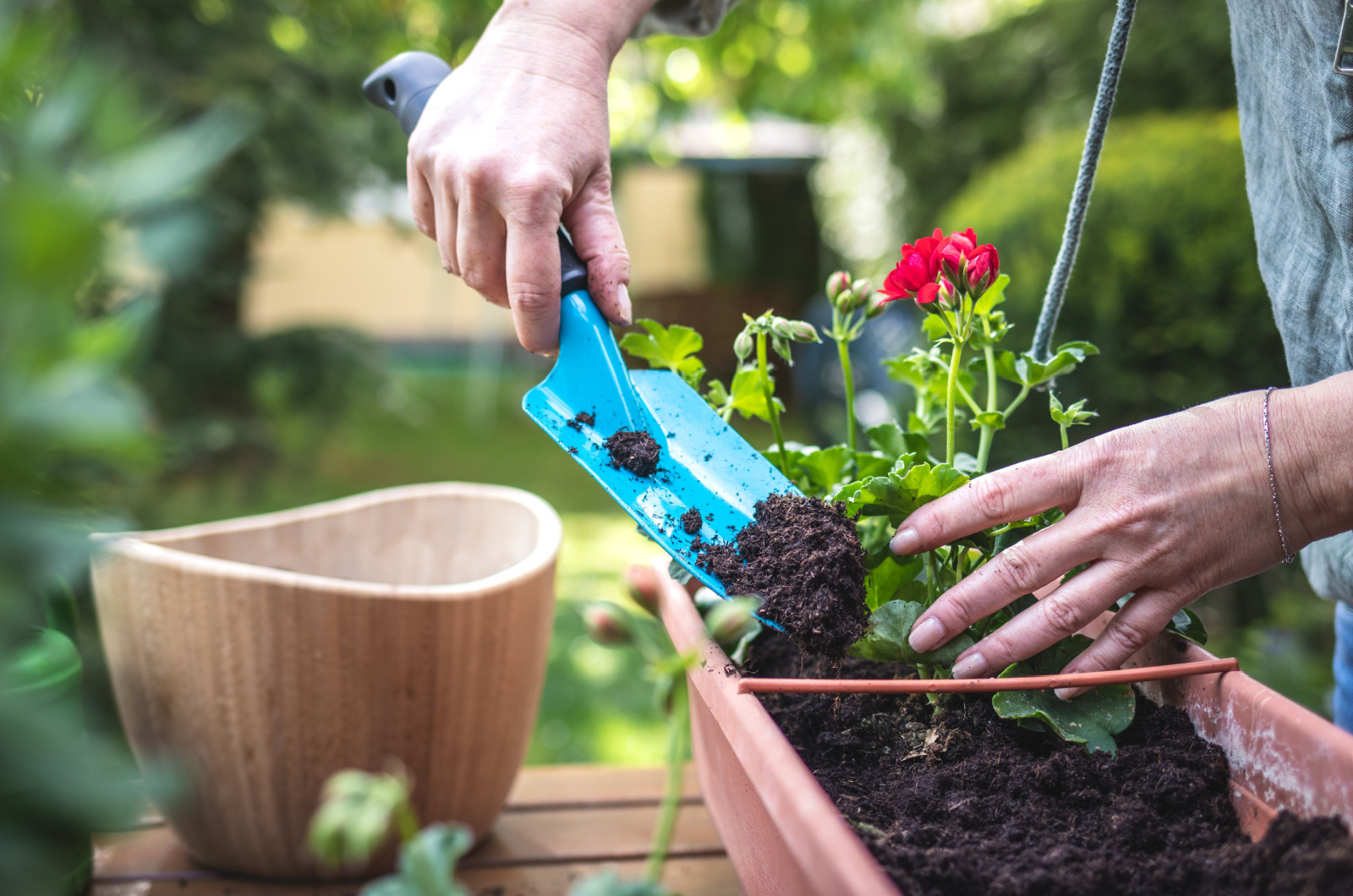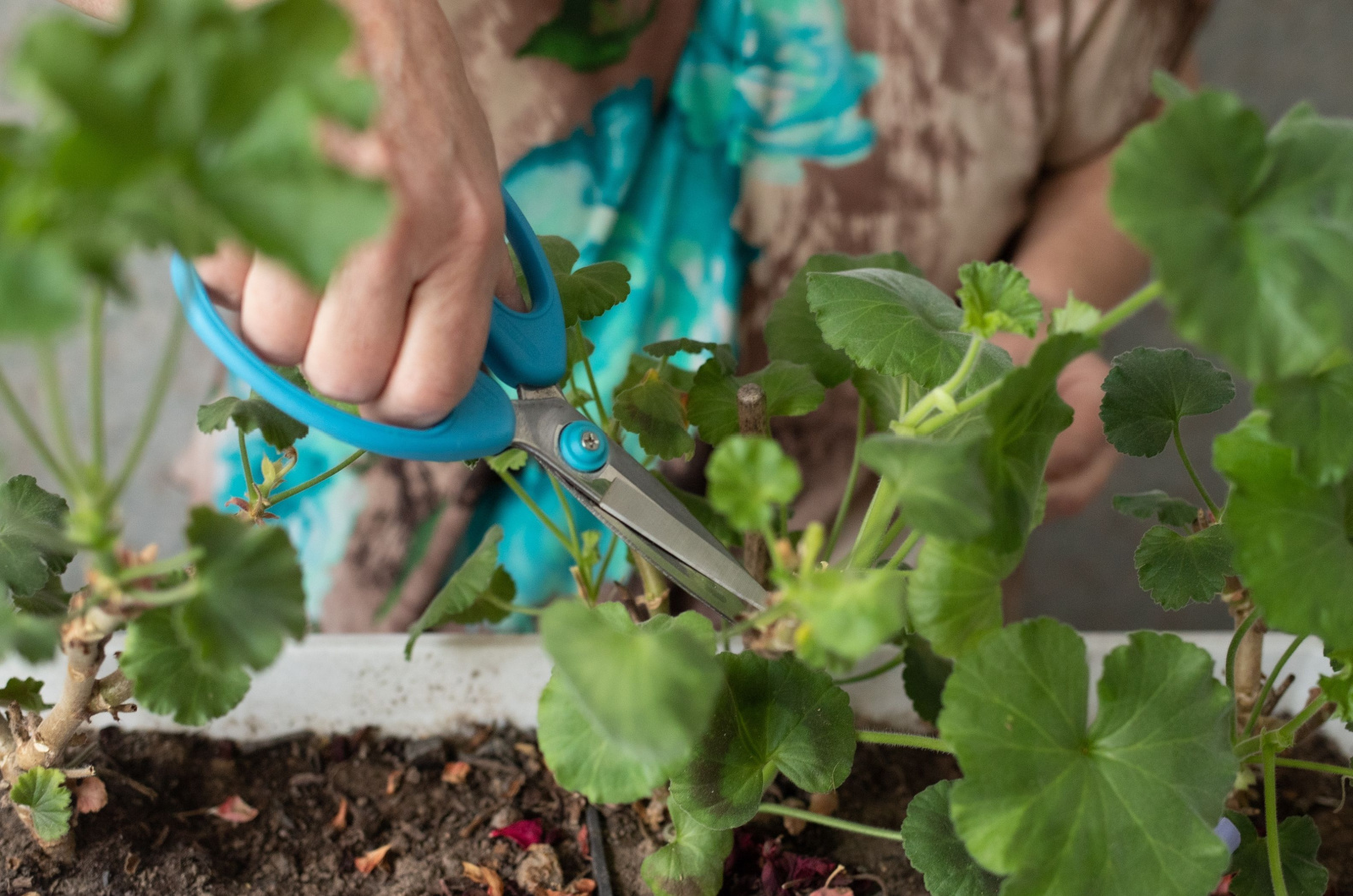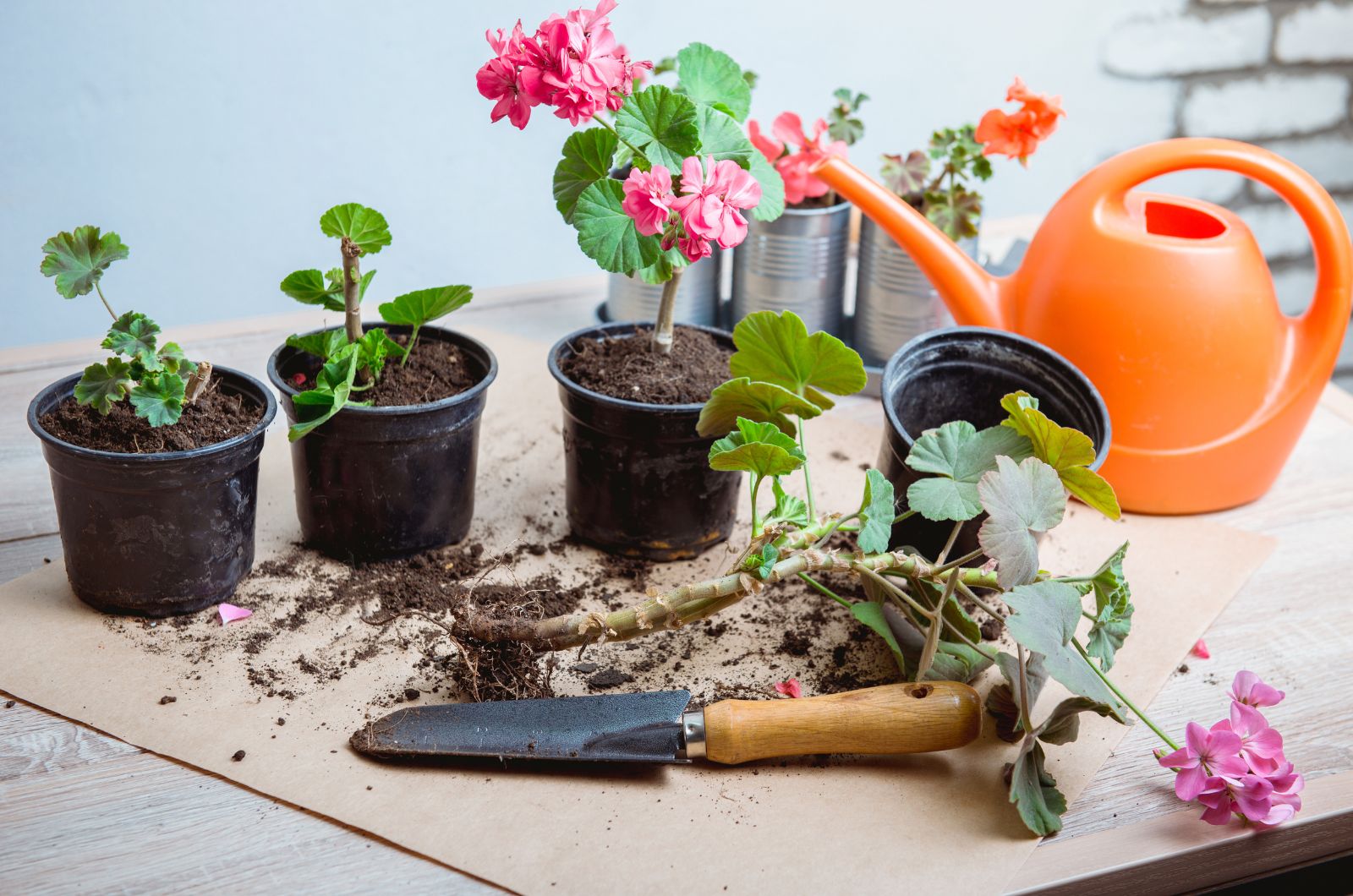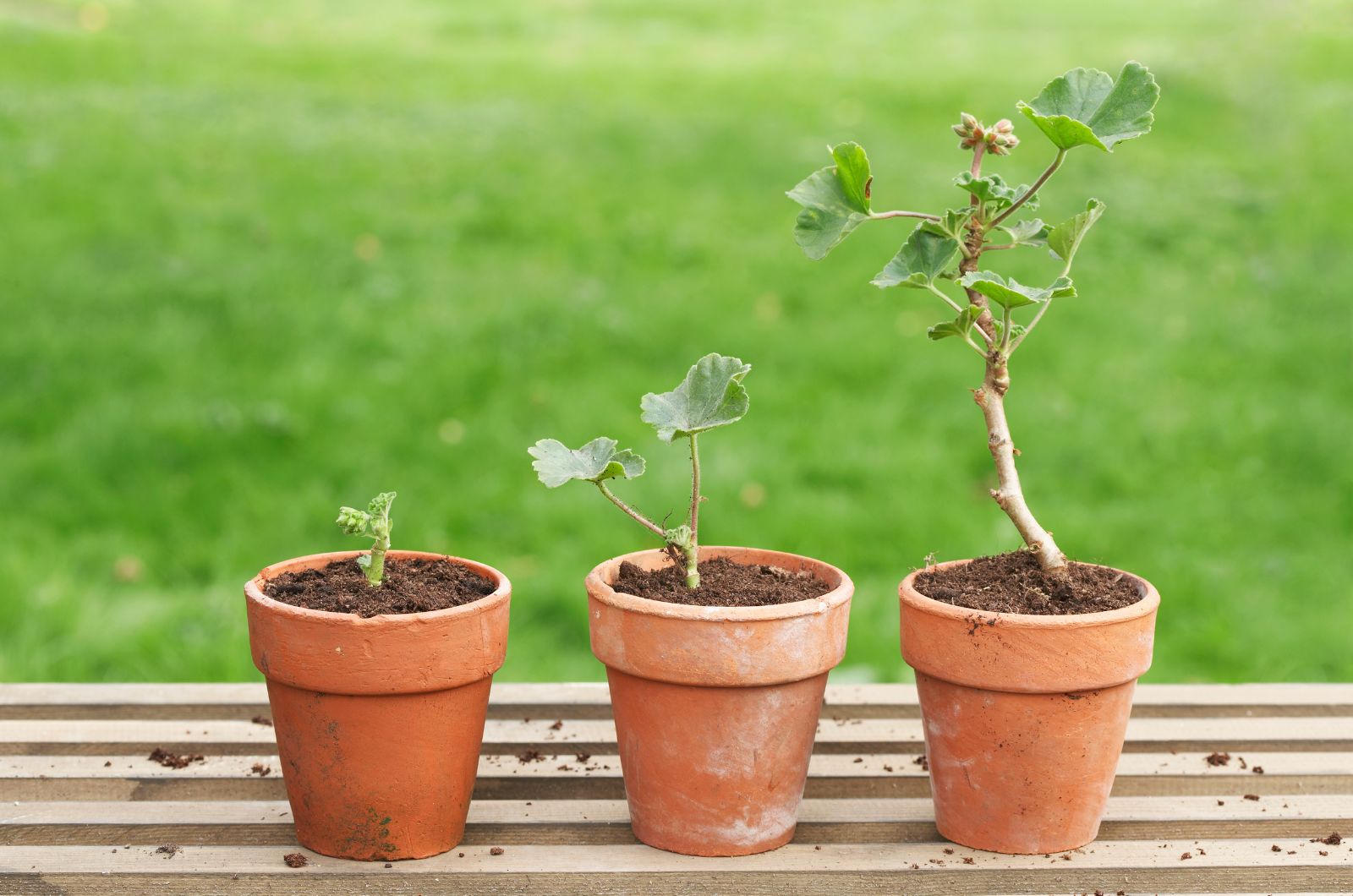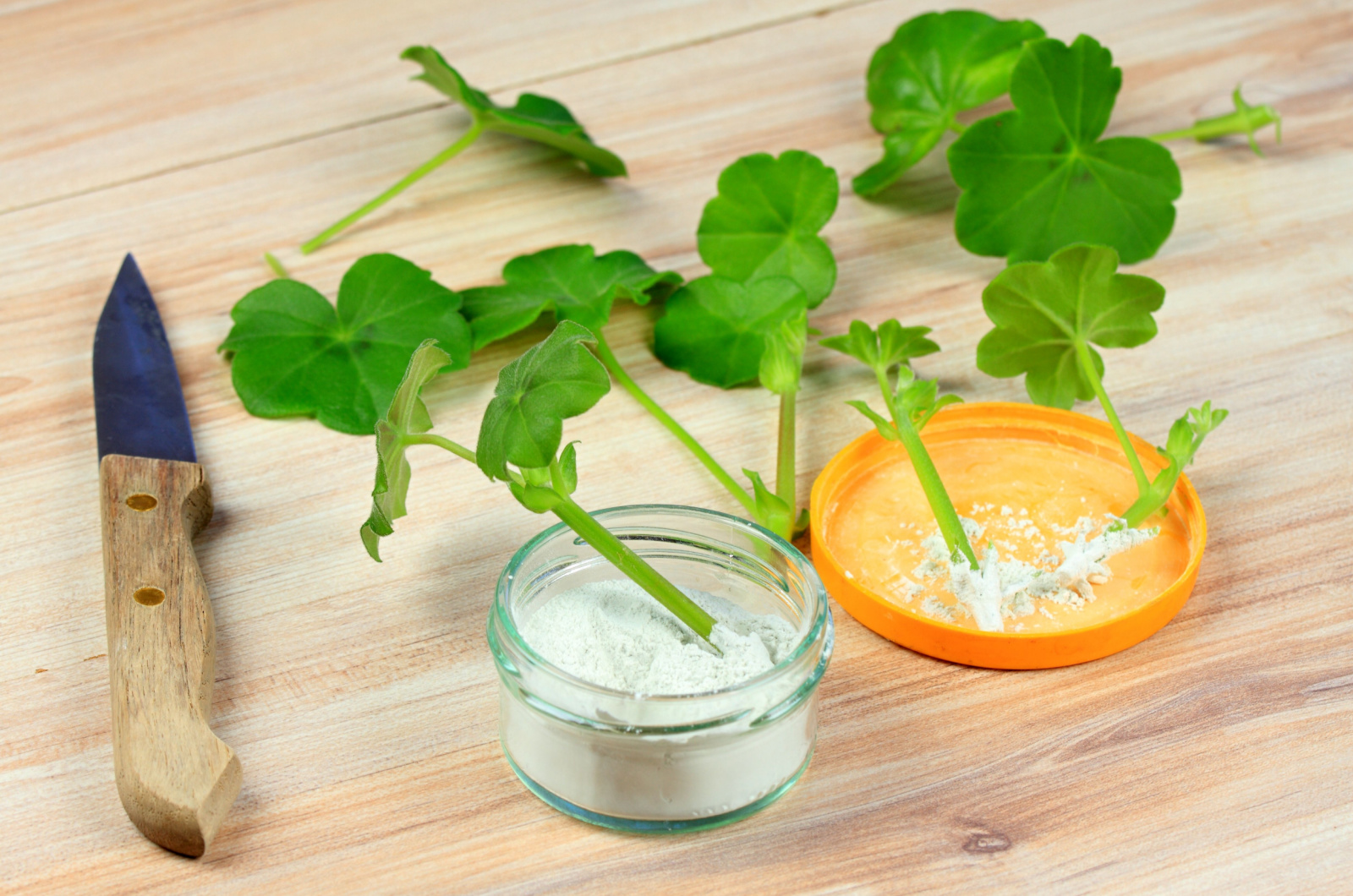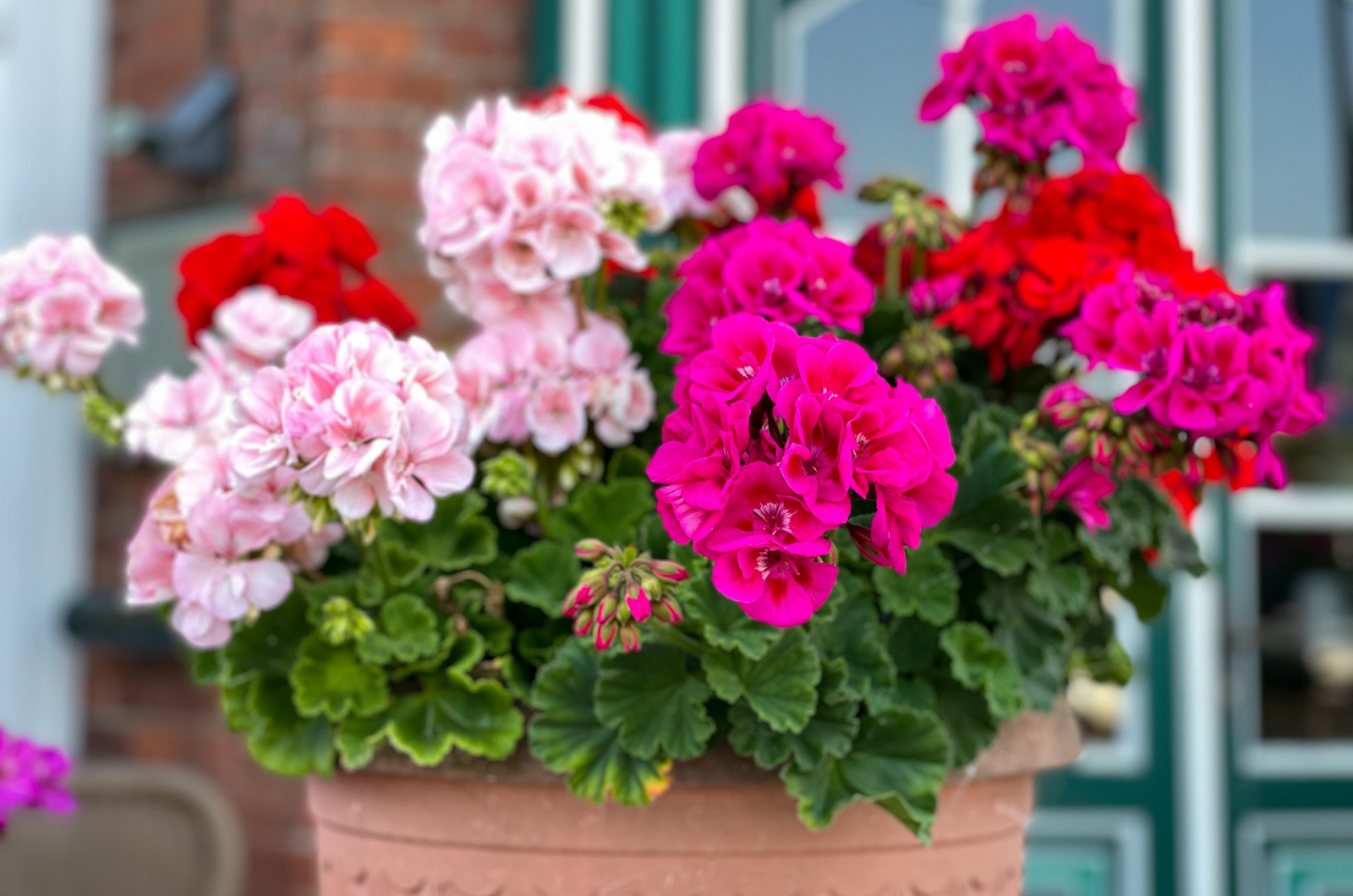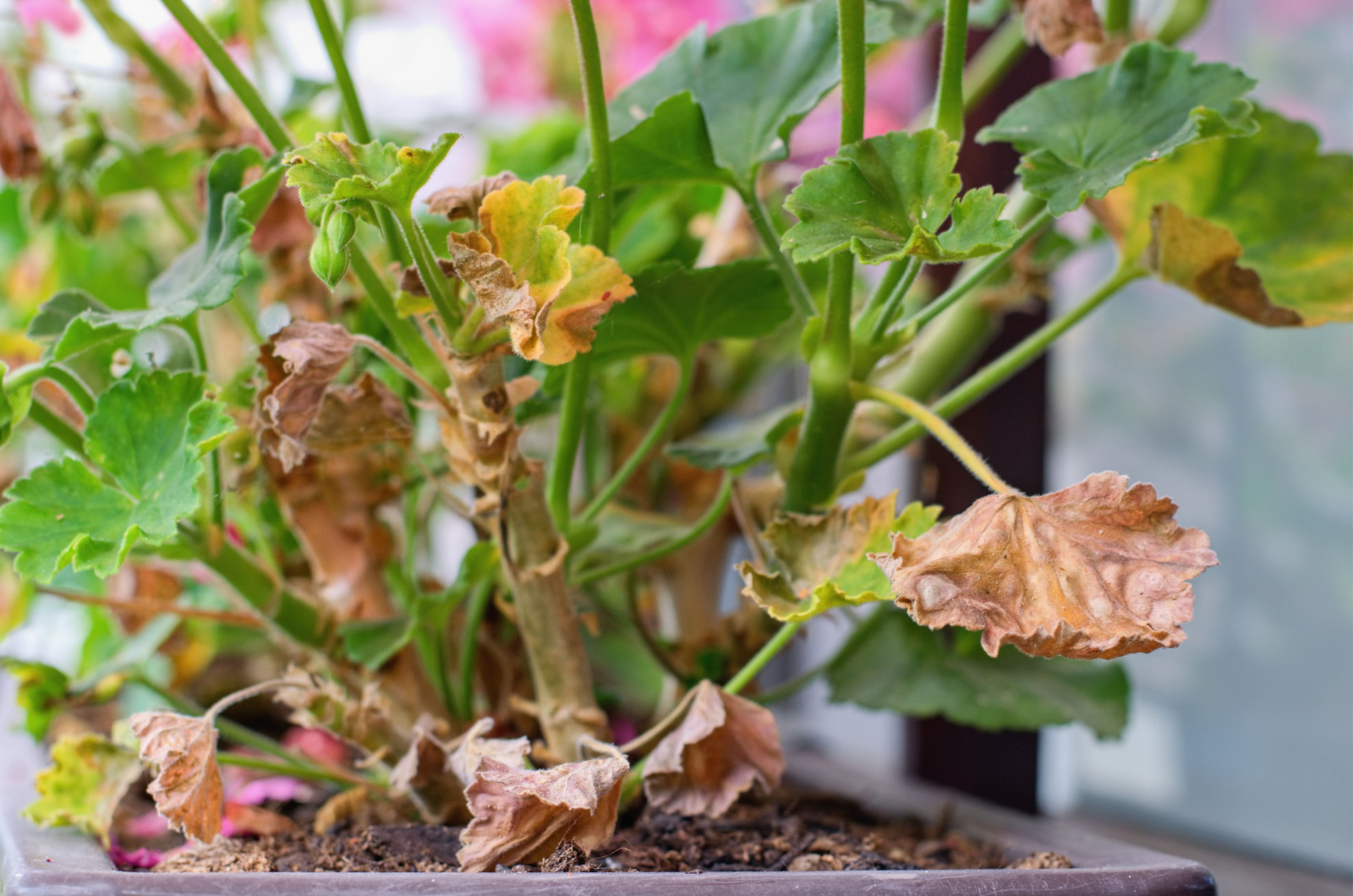Here in Central Florida, we grow geraniums as winter annuals. But if you’re blessed with colder weather, you can enjoy these plants all year long.
One thing I was dying to try out was growing geraniums in containers to see whether they can survive this climate. And they did!
With a little bit of care and knowledge, you can grow these amazing flowers in pots without any issues.
Here’s how!
#1 Choose A Suitable Variety
The first thing you need to do is choose which geranium you want to grow. All varieties grow well in containers, but they differ in color, size, and life span.
There are annual and perennial species, with numerous cultivars in between.
Zonal geraniums are perfect for temperate climates and produce a profusion of blossoms. Ivy geraniums are famous for their trailing habits.
And if you want the best of both worlds, there are zonal-ivy geranium hybrids that are perfect for hotter climates. Yet, they can only handle the mildest of winters!
Then, there are regal geraniums that prefer colder conditions – indoors, too.
Finally, I can’t help but mention scented geraniums. They are annuals, but you can grow them as tender perennials with proper care. Enjoy the chocolate, cinnamon, lemon, mint, and rose fragrances in your home.
Scented geraniums are also one of the least demanding options for containers!
Whatever species you chose, know that there are many companion plants for geraniums. You can grow them in the same planter (as long as it’s enormous), or place your potted geranium near its preferred company.
#2 Find The Best Container
Geraniums are deep-rooted plants, so you need to find a planter that will accommodate this. Yet, they tend to produce gorgeous and numerous flowers when they are slightly rootbound.
So, finding the right pot is a balancing act between these two factors. Go for a container that can fit an entire root system and don’t replace it with a bigger one any time soon!
As far as materials go, you can opt for plastic or terracotta planters. These flowers grow well in both. The only difference is that terracotta pots drain a bit faster, so you may need to irrigate your geraniums more often.
Drainage holes are an absolute must when it comes to planters. Geraniums need excellent drainage. In fact, poor drainage will result in waterlogging. In return, this leads to slow and stunted growth, yellowing, and even root rot.
If you’ve had trouble with this in the past, consider the type of soil you use. A well-draining soil mix can help out a lot!
#3 Follow Its Care Guide
Whether you’re growing your potted geraniums indoors or outdoors, there are a few rules that can determine how well they grow. Bushy appearance, numerous flowers, and a well-developed root system all depend on how well you care for your plants.
The main things you should focus on are lighting, watering, and nutrients, although there are other things you need to pay attention to.
Indoor temperature, your pruning habits, and humidity can make or break a geranium’s flowering ability!
Light Requirements
Geraniums are light-loving plants that do best in full sun or partial shade (ivy geraniums in particular). When you check any guide to sun exposure, you’ll see this means anywhere between 4-6 hours of direct sunlight.
If you’re growing these plants indoors, place them near a south- or west-facing window so that they can soak as much light as possible.
You can also supplement sunlight with grow lights (12-14 hours a day) if you don’t have a sunny windowsill available.
Water And Humidity
Potted geraniums do need more frequent watering than in-ground ones, but that doesn’t mean you have to drench them every day. Wait until the soil mix dries out a bit before irrigating them.
In general, you can water geraniums once a week in spring – more often in summer and less in winter. These plants hate waterlogging and will suffer if you overwater them.
When it comes to humidity, 40-70% is ideal. Air moisture that is too high will lead to fungal diseases, while too low will result in wilting. If the humidity levels in your home are too low, you can always turn on a humidifier; this is the best solution!
Temperature
There are many different geranium varieties that thrive in different climates. Hybrid ivy and zonal geraniums thrive in hotter weather, while regal ones prefer colder conditions.
Many varieties we grow in pots are tender perennials. Keeping the daytime temperature between 65-70°F and nighttime above 55°F should be enough to maintain their health.
And if you need some extra help, you can always cover these plants with fleece and crop covers. Just make sure to remove it in the morning so that the humidity doesn’t get too high.
Soil And Fertilizer
Geraniums prefer light and loose potting mix rich in organic matter. If your growing medium is too heavy, you can amend it with compost, pumice, or perlite.
You should also use a liquid fertilizer, such as 5-10-5, for your potted geraniums. Dilute it to at least half strength and apply it once a month.
Many growers want to know whether they should use coffee grounds for geraniums. I wouldn’t do it! Coffee grinds can reduce the pH level of the growing medium a bit, but not so much as to hurt your plants.
The bigger issue is that they contain a lot of nitrogen and may encourage leaf growth at the expense of flowers.
Pruning
Trimming is another essential part of geranium care. The good news is that you don’t have to do too much!
Deadhead the spent flowers so that new ones can grow in their stead. Prune away old, discolored, and diseased foliage.
You can also trim your geraniums a bit in fall – after they finish flowering. Pinch their new growth to promote bushiness, and that’s it!
Repotting
Geraniums flower best when they are a bit potbound. That means you don’t have to repot them more than once every couple of years.
Replace the old soil with a fresh mix and don’t apply fertilizer for the first couple of months if you’re using a store-bought potting medium. They usually contain added plant food, so adding extra would be too much.
#4 Plant Your Geraniums The Right Way
Growing potted geraniums calls for yet another decision: whether to plant the plugs, seeds, or cuttings.
If you’ve bought geranium plugs and want to grow a few plants in a single container, make sure to space them 8-10 inches apart.
Don’t plant them too deep because this can stunt their growth. Wait until the last spring frost passes or plant them in fall before the first ones arrive.
As for seed and cutting propagation, here’s some more info!
Seed Propagation
It will take a long time for the geranium seeds to become an established plant. Yet, there’s no way of speeding up the process. Here are the steps to help you out:
Step 1. Plant the seeds 8-10 weeks before the last spring frost. Fill a nursery tray or pot with a moist seed-starting mix.
Step 2. Sow a seed per cell or separate them by 2-3 inches if you’re growing them in the same pot.
Step 3. Cover the seeds with a 1/4 inch of the growing medium. Place them in a propagator or on a heating mat. Cover them with a humidity dome or plastic bag to increase moisture and help rooting.
Step 4. Once you notice the first set of true leaves appearing, repot the geranium seedlings into separate pots.
Propagation By Cuttings
Rooting cuttings is a much faster method than growing these flowers from seeds. This will also guarantee that you end up with the same plant as the parent, which is not always the case with seeds.
Geraniums are on the list of plants you can propagate in water vases, but you can also use a seed-starting mix. Here’s the breakdown of this method:
Step 1. In summer, take 3-5 inch long cuttings. Remove the bottom foliage and apply some rooting hormone to the cut.
Step 2. Plant them in a seed-starting mix or make your own by blending compost, vermiculite, and sand. Space them a couple of inches apart.
Step 3. Cover the geranium cuttings with a plastic bag to increase humidity and aid rooting.
Step 4. Expose them to bright indirect sunlight and keep the growing medium moist. The roots should develop in about 6-8 weeks. Once you notice new growth appearing, repot the plants into separate containers.
#5 Don’t Forget To Overwinter Them
Did you know that you can save your geraniums in fall by overwintering them indoors? That way, they don’t have to be annuals any longer!
You can overwinter them as houseplants by placing them near a sunny window and reducing watering a bit.
Or you can induce their dormancy by pruning them. Chop off the top half, cover it in burlap, and move it to a cool and dark spot, such as a garage or basement.
#6 Keep Your Potted Geraniums Blooming
One of the most common questions I get is about how to keep geraniums blooming. All you have to do is ensure they have a well-draining and fertile soil mix, get enough water, and 4-6 hours of direct light.
Avoid overwatering them and keeping them in too small containers. Repot your geraniums every couple of years to avoid severe “rootboundness.”
Feed your potted geraniums once a month with a balanced fertilizer. Just make sure it isn’t too rich in nitrogen because that will reduce flowering and promote leaf growth.
Bonus Tip: Potted Geranium Issues You May Encounter
The main issues that can afflict potted geraniums relate to lighting, watering, and humidity. One of the most common problems this plant encounters is legginess. It develops as a result of lack of sunlight.
Another problem that can occur are yellow leaves. They are usually a sign of overwatering. If you don’t think that’s the case, check whether your soil is fertile enough and whether your plant gets enough light.
Geraniums as houseplants can suffer from occasional pest infestation. Aphids, whiteflies, and mealybugs are the most common ones. They attack plants that aren’t doing so well.
To reduce the risk of pest infestations and prevent them from coming back, ensure there’s enough airflow around your plants. Spray them with organic insecticides or horticultural oils, and this issue will become a thing of the past.
Finally, leaf rust and root rot are common diseases that may attack your geraniums. The former occurs as a result of high humidity and constant leaf wetting.
You can recognize this fungal disease by small yellow circles on the bottom side of the foliage. As time goes on, you’ll notice orange-brown spores and pustules.
The only way to get rid of leaf rust is by removing the infected foliage and applying fungicide to the rest of the plant.
As for root rot, we all know it’s overwatering that causes it. You can treat your plant by pruning the diseased roots and spraying the rest with fungicide. Repot the plant into a fresh potting mix and reduce watering frequency.

